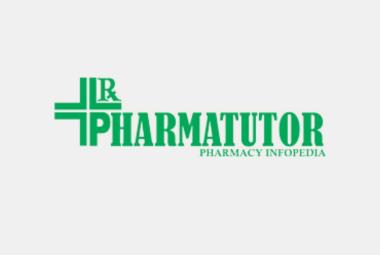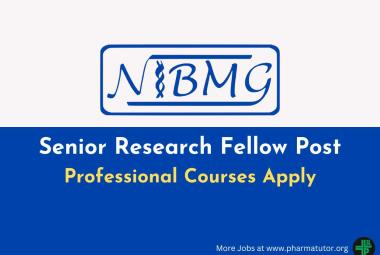 About Authors:
About Authors:
Lohithasu Duppala*1, Madhu priya Damuluri1, Anilkumar vadda2
*1GITAM Institute of Pharmacy, GITAM University,
visakhapatnam, Andhra Pradesh, India-530045.
2AVANTHI Institute of pharmaceutical sciences, pharmacology,
visakhapatnam, Andhra Pradesh, India-530045.
*lohithasu@gmail.com, +91-9491894432.
INTRODUCTION
A biosensor is a measuring device that uses an immobilized agent to detect a chemical compound concentration or activity by converting a biological response into measurable signal as workable signal form. It is a self-contained analytical and measurable device that incorporates a biologically active material in contact with tranducer or detecting element to detect the concentration or activity of chemical compounds in a analyte or sample. The obtain electrical signal it produces carries the necessary information about the process under investigation.1
[adsense:336x280:8701650588]
REFERECNE ID: PHARMATUTOR-ART-1702
Father of the Biosensor - Professor Leland C Clark Jnr 1918–2005
Generations of a Biosensor
First Generation – In which the normal product of the reaction diffuses to the transducer and causes the electrical response.
Second Generation- In which involve “specific mediators” between the reaction and the transducer in order to generate improve response.
Third Generation- In which the reaction itself causes the response and no product or mediator diffusion is directly involved.
Steps:
1)Diffusion of analyte
2)Reaction with bio. Element
3)Change in physicochemical properties
4)Change in optical/ electronic properties
5)Measurement, amplified and display
Basic Characteristics of a Biosensor
Basic Characteristics of a Biosensor includes-
Low detection imits,Cost,Simplicity,Reliability,Speed ,Accuracy Precision,Utility,Field portability,Ruggedness,Reproducibility,Ease of calibration,Stability,Room for improvement
1. Linearity-Linearity of the sensor should be high for the detection of high substrate concentration.
2. Sensitivity-Value of the electrode response per substrate concentration.
3. Selectivity-Chemicals Interference must be minimised for obtaining the correct result.
4.Response time -Time necessary for having 95% of the response.
Components or Parts of a Biosensor
[adsense:468x15:2204050025]
A biosensor mainly consists of the following three main parts. Those are:
1.Bioreceptor or The sensitive biological detection system
2.Tranducer or The detector element
3.Signal Processors or Electronic devices
1.Bioreceptor or The sensitive biological detection system2
It may be an enzyme, tissues, microorganisms, organelles, antibodies, immunoagent, chemoreceptor, a living cell or binding molecule etc., .It is biologically derived material or biomimic. It can interact with the analyte or sample or substrate. It is a typically complex chemical system usually extracted or derived directly from a biological organism.
2.Tranducer or The detector element3
It transforms the physical and chemical change accompanying the bio recognition signal (after ineraction) into measurable another signal ,the resulting signal can be easily quantified. It is the key component or part of biosensor.
Some of the important tranducers in biosensors are
A. Electrochemical
B. Optical or Photometric
C. Caloriometric
D. Piezoelectric etc.,
A. Electrochemical- These biosensors are based on enzymatic (redox enzymes) catalysis of a reaction that produces or consumes electrons. Potentiometric(For voltage: Change in distribution of charge is detected using ion-selective electrodes, such as pH-meters ) and amperometric (the potential between the electrodes is set and the current produced by oxidation or reduction of electroactive species is measured and correlated to the concentration of the analyte of intrest) transducers are in common. For applied current: Movement of electrons in redox reactions detected when a potential is applied between two electrodes.
Eg:
Urea detection-Potentiometric Method , Consumption of a gas can be observed
Blood Glucose Biosensor-Amperometric Method
Cathode:platinum
Anode:silver chloride
Potential/voltage between the electrode:-0.7V
The basic principle involved in enzyme i.e Glucose Oxi Dase (GOD) act as a glucose breakdown .The enzyme i.e Glucose OxiDase (GOD) catalyses the glucose into gluconolactone ,finally yield gluconicacid and uses two electrons to reduce the flavin adenine dinucleotide, FAD, to FADH2. Glucose OxiDase (GOD) acts as a bio recognition element (recognise the glucose molecules). and tranducer (electrode) .Measurment of concentration of glucose by consume of oxygen by the enzyme .The current propotional to oxygen concentration as well as concentration of glucose is then propotional to the decrease in the current.
B. Optical or Photometric-It measures light output during the reaction or a light absorbance difference between the reactants and products. It may be a single carbon electrode or ionsenstive electrode or photocell. The devices are based on principle i.e., surface Plasmon resonance are evanscent wave techniques.
Eg:
Luciferase for bacteria detection,
Fully operational prototype device detecting casein in milk has been fabricated. The devices are based on change in absorption of a gold layer also based on change in fluorescence of an specific indicator compound and don’t need a total reflection geometry.
C. Caloriometric- It measures the heat of a biochemical reaction. If the enzyme catalyzed reaction is exothermic, two thermistors may be used to measure the difference in resistance between reactant and product and, hence, the analyte concentration.
Eg:
It can detect temp. difference of 0.0001 C.
D. Piezoelectric- These biosensors are based on crystals undergo an elastic deformation when electrical potential is applied to them . Piezo-electric devices use gold to detect the specific angle at which electron waves are emitted when the substance is exposed to laser light or crystals, such as quartz, which vibrate under the influence of an electric field. The change in frequency is proportional to the mass of absorbed material.An alternating potential produces a standing wave in the crystal at a characteristic frequency, this frequency is highly dependent on the elastic properties of the crystals, such that if a crystal is coated with biological recognition element the binding of target analyte to a receptor will produce a change resonance , which gives signal. In a mode that uses surface waves , the sensitivity is greatly increased. This is special application of the quartz crystal microbalance in biosensor.
Eg: Cocaine detection
3.Signal Processors or Electronic devices
It converts signal into measurable form. It includes micro-elecronics, data processors, digital read out devices, recorders, a signal amplifier, processor etc.,
NOW YOU CAN ALSO PUBLISH YOUR ARTICLE ONLINE.
SUBMIT YOUR ARTICLE/PROJECT AT articles@pharmatutor.org
Subscribe to Pharmatutor Alerts by Email
FIND OUT MORE ARTICLES AT OUR DATABASE
APPLICATIONS OF BIOSENSORS 4-14
1.Medicine and industry
2.Environmental
3.Microbiological and pathological
4.Pharmaceutical
5.Other fields
1. Medicine and industry- In olden days biosensors were applied in this field.These application include that
• Glucose monitoring in diabetes patients
• Tumor cells are used as a biosensor to monitor chemotherapeutic drug susceptibilities.
• Medical diagnosis (both clinical and laboratory use)
• Pregnancy test -Detects the hCG protein in urine.
• Infectous disease biosensor from RBS
• Detection of toxic metabolites
• Analytical measurement of folic acid , vitamin B12, Panthotenic acid
• Detection of organophosphate
• Industrial Process Control
• The development of biosensors in industry can improve manufacturing techniques, which would allow for a wider range of sensing molecules to be produced at a cheaper rate.
• Biosensors in process control will be able to measure materials in the process flow of temperature, pressure and the acidity readings.
• Detection of toxic substances level before and after bioremediation
2. Environmental
• In counterbioterrorist activities
• Detection of pesticides and river water contaminants such as heavy metal ions
• Environmental testing by using a “flow-through” system to monitor wastewater (a flow-through system includes instruments using surface plasmon resonance).
3. Microbiological and pathological
• Detection of Pathogensborne bacterias
• Detection of mycotoxins
• Detection and remote of sensing of air- counter bioterrorist activities
4. Pharmaceutical
• Drug discovery and evaluation of biological activity of new compounds
• Determination of drug residues in food , such as antibiotics and growth promoters ,mainly honey and meat.
• Manufacturing of pharmaceuticals and replacement organs
5. Other fields
The biosensors have wide range of applications in various fields because of their small size, easy to handling.
• Protein engineering
• Food Analysis
• Study of biomolecules and their interaction
• Detection of viral, fungal, bacterial diseases of plants.
• In food industry, detection of total microbes and sugar quantification in soft drink.
• Biosensor is also used to determine the freshness of fish, beef and other food items.
• In military and defense organization, portable biosensor can be very useful for detection of toxic gases
• And also in the agents of chemical warfare, such as mustard and nerve gas.
REFERENCES
1.Turner, Anthony; Wilson, George and Kaube, Isao (1987). Biosensors:Fundamentals and Applications. Oxford, UK: Oxford University Press. pp. pp. 770. ISBN 0198547242.
2. Vo-Dinh, T.; Cullum, B. (2000). "Biosensors and biochips: Advances in biological and medical diagnostics". Fresenius' Journal of Analytical Chemistry 366 (6–7): 540.
3. S.Q. Lud, M.G. Nikolaides, I. Haase, M. Fischer and A.R. Bausch (2006)."Field Effect of Screened Charges: Electrical Detection of Peptides and Proteins by a Thin Film Resistor" ChemPhysChem 7(2), 379-38
4.Saharudin Haron and Asim K. Ray (2006) Optical biodetection of cadmium and lead ions in water. Medical Engineering and Physics, 28 (10). pp. 978-981. ISSN 1350-4533.
5. Pohanka M, Skladal P, Kroca M (2007)."Biosensors for biological warfare agent detection". Def. Sci. J. 57(3):185-93.
6. springerlink.com/content/672p4l4l45xk02j2
7.Pohanka M, Jun D, Kuca K (2007)."Mycotoxin assay using biosensor technology: a review. Drug Chem. Toxicol. 30(3):253-61.
8."Biosensors Primer". clemson.edu/c3b/biosensorsPrimer.html. Retrieved 28 January 2013
9.International Union of Pure and Applied Chemistry. "Biosensor". Compendium of Chemical Terminology Internet edition.
10.lsbu.ac.uk/biology/enztech/optical.html.
11.lsbu.ac.uk/biology/enztech/biosensors.html
12.ornl.gov/ornlreview/rev293/text/biosens.html
13.wikipedia.org/wiki/Biosensor
14.Encyclopedia of chemical technology, by Kirth and Othmer (vol.4) page no.208-220
NOW YOU CAN ALSO PUBLISH YOUR ARTICLE ONLINE.
SUBMIT YOUR ARTICLE/PROJECT AT articles@pharmatutor.org
Subscribe to Pharmatutor Alerts by Email
FIND OUT MORE ARTICLES AT OUR DATABASE









